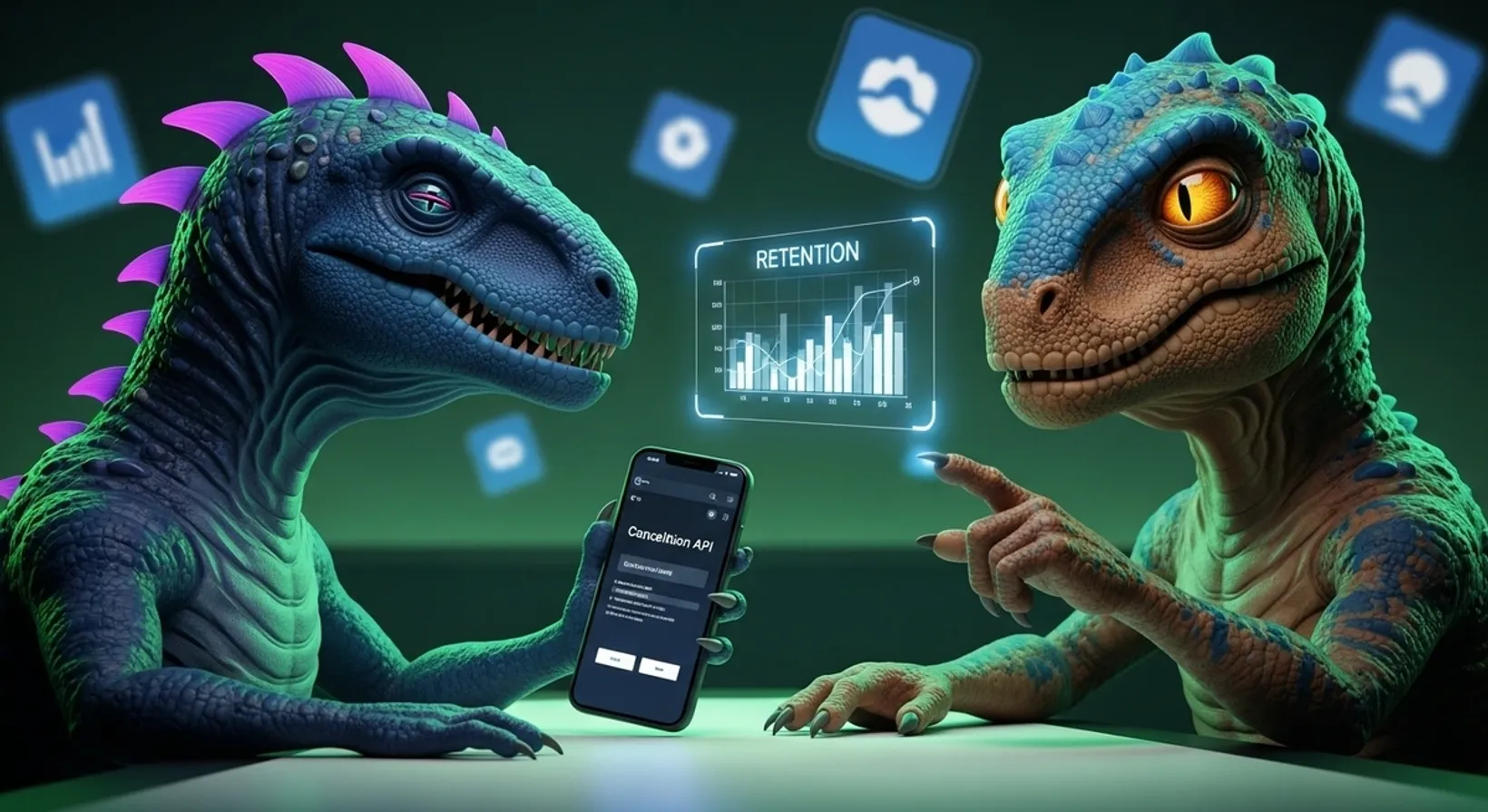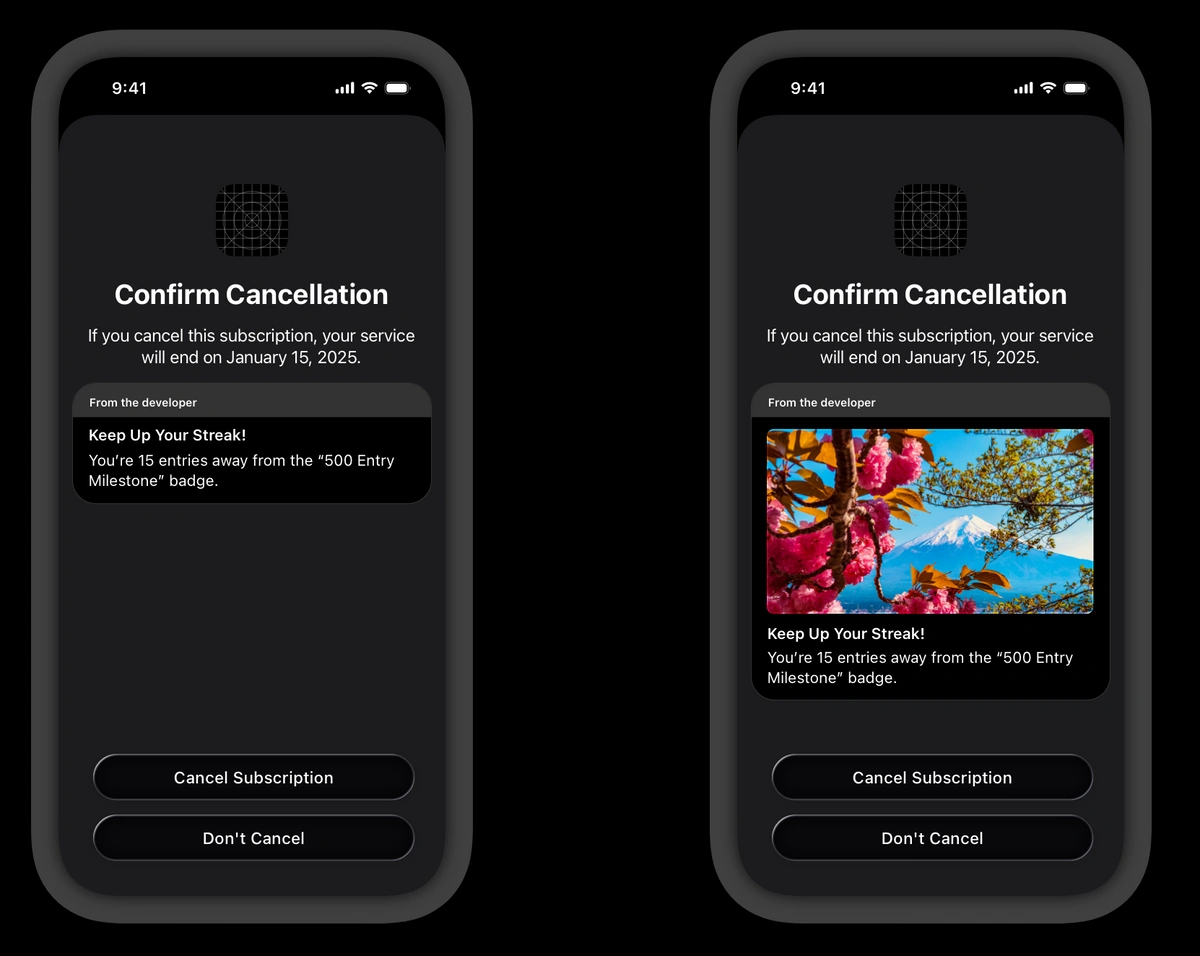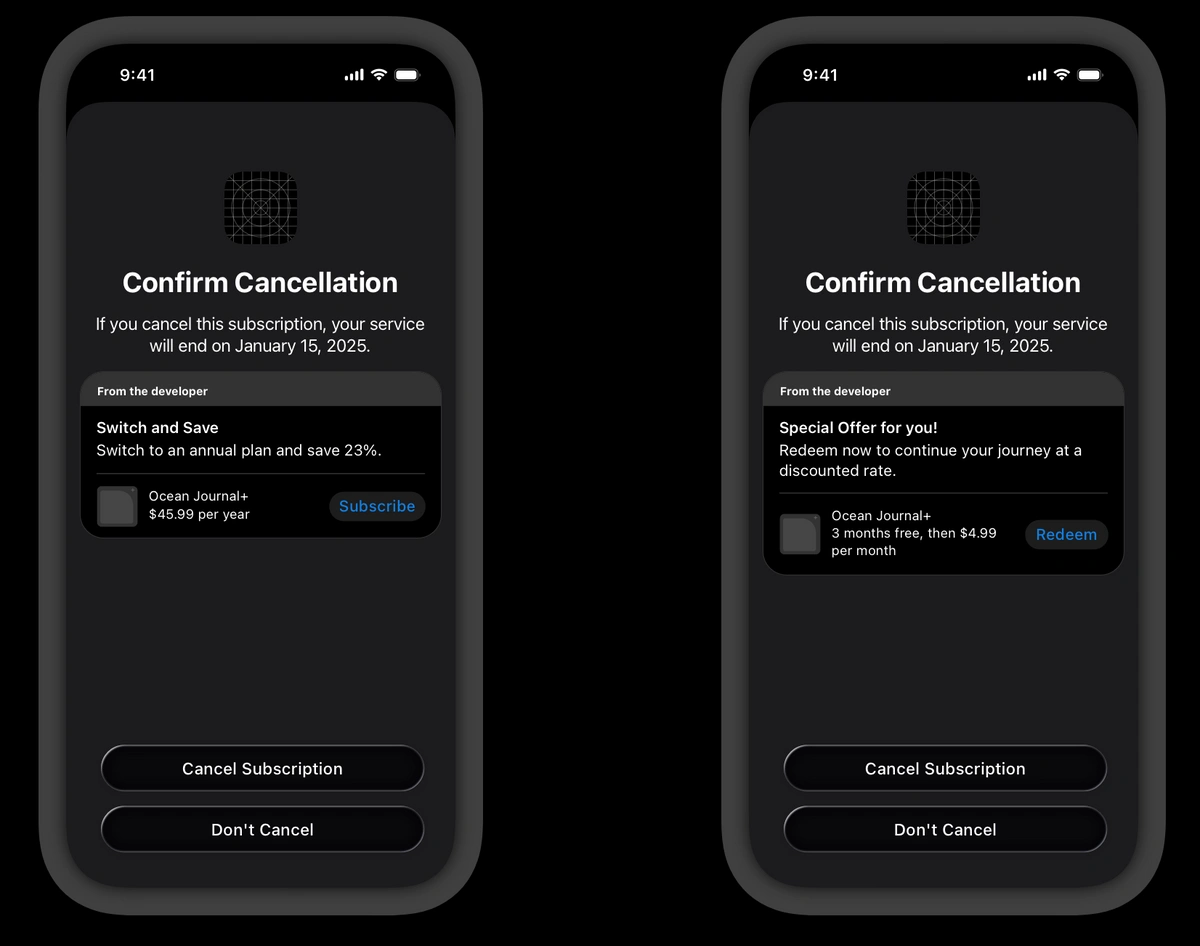Apple just dropped something interesting for subscription app developers: the Retention Messaging API. This new feature lets you show custom messages to users right before they cancel their subscriptions, complete with images, alternative offers, and discount promotions. But this isn't just another API release. It's Apple's calculated move to make iOS subscriptions more attractive in a post-Epic world.
Why Now? The Epic Effect
Remember the Epic vs. Apple ruling? The court decided Apple couldn't prevent apps from directing users to external subscription options. That ruling fundamentally changed the subscription landscape on iOS. Suddenly, developers had legitimate alternatives to Apple's 30% cut, and Apple knew it.
The Retention Messaging API is Apple's response. They're not just sitting back and watching developers flee to web subscriptions. Instead, they're doubling down on making native iOS subscriptions more valuable. This feature gives developers tools they simply can't get with web-based subscription flows, creating a compelling reason to stick with Apple's ecosystem.
Expect more features like this. Apple needs to prove that its subscription platform offers unique value that justifies both the revenue share and the platform lock-in. This is just the beginning.
What the API Actually Does
The Retention Messaging API intercepts that crucial moment when a user is about to hit "Cancel Subscription." Instead of immediately processing the cancellation, iOS now displays a customizable message from you, the developer.
You get four types of retention messages:
- Text-only messages for simple reminders about what users will lose
- Text with images to make your retention effort more visually compelling
- Switch-plan messages that suggest alternative subscription tiers
- Promotional offers with actual discounts to sweeten the deal
The system triggers these messages after users tap "Cancel Subscription" but before the cancellation is final. Users see a confirmation screen with your custom message and can choose to cancel anyway, stick with their subscription, or take advantage of whatever offer you're presenting.
Two Implementation Approaches
Apple gives you flexibility in how you deploy retention messaging:
Default Messages
Set up standard retention messages for specific products and locales. These are text-based (with optional images) and work as a baseline retention strategy. Perfect for apps that want retention messaging without complex server-side logic.
Real-Time Messaging
This is where things get interesting. Apple's servers call your endpoint when a user views the subscription cancellation page. You receive details about the subscription and user locale, then respond with the most appropriate retention message for that specific situation.
Real-time messaging opens up sophisticated retention strategies. You could offer larger discounts to long-term subscribers, suggest different plans based on usage patterns, or tailor messages to users' subscription histories.
Technical Implementation
Setting up the real-time flow involves several steps:
First, you upload your messages and images through Apple's API. Then you configure default fallback messages (smart, since network calls can fail). Most importantly, you implement the "Get Retention Message" endpoint on your server.
When Apple's servers hit your endpoint, they send a request body containing the original transaction ID and user locale. You decode this information and respond with your chosen retention message ID. The entire process occurs server-to-server, ensuring it's fast and reliable.
The API includes proper rate limiting and error handling. Apple learned from past API releases that developers need clear guidance on quotas and failure scenarios.
Business Impact
For subscription apps, this feature addresses one of the biggest revenue leaks: involuntary churn during the cancellation process. Users often cancel subscriptions impulsively, without fully considering what they're giving up. Retention messaging gives you one last chance to demonstrate value.
The real business opportunity is in the real-time messaging capability. Instead of generic "please don't leave" messages, you can make data-driven retention offers. High-value users might see deeper discounts. Users on premium plans might get offers to downgrade rather than cancel entirely. New subscribers who haven't experienced your full feature set might see educational content about premium features.
At Rapptr Labs, we've built subscription systems for numerous clients, and we know that even small improvements in retention rates compound dramatically over time. A 10% improvement in monthly retention can increase lifetime customer value by 50% or more, depending on your business model.
What This Means for Developers
The Retention Messaging API signals Apple's commitment to making iOS subscriptions competitive with alternatives. They're not just taking a cut of revenue anymore; they're providing tools that genuinely help developers make more money.
This creates an interesting dynamic. Developers who fully leverage features like retention messaging might generate more revenue through Apple's ecosystem than they would with direct web subscriptions, even after paying Apple's fees.
However, implementing these features requires server-side development and ongoing maintenance. You need to upload and manage messages, implement webhook endpoints, and build logic for real-time message selection. It's not trivial, but for apps with significant subscription revenue, the investment pays off quickly.
Looking Forward
The Retention Messaging API won't be Apple's last move to strengthen iOS subscriptions. The Epic ruling created competitive pressure that Apple hasn't faced before, and they're responding with innovation rather than just legal maneuvering.
Expect more features that make native iOS subscriptions uniquely powerful. Apple has access to user behavior data, device capabilities, and integration points that web subscriptions simply can't match. They'll continue building on these advantages.
For developers, this creates both opportunity and complexity. The most successful subscription apps will be those that fully leverage Apple's expanding toolkit while maintaining the flexibility to adapt as the landscape continues evolving.
Getting Started
The Retention Messaging API is currently in pre-release, requiring developers to request access through Apple's developer portal. If you're running subscription-based apps on iOS, it's worth getting on the waitlist early.
The implementation complexity varies based on your approach. Default messages are straightforward to set up, while real-time messaging requires more sophisticated server infrastructure. For many apps, starting with default messages and gradually moving to real-time implementation makes sense.
At Rapptr Labs, we're already exploring integration strategies for our clients' subscription apps. The potential revenue impact makes this a high-priority feature for any serious subscription business on iOS.
Apple's message is clear: they're not just a platform anymore, they're a subscription growth partner. The question is whether developers will take advantage of these new tools or stick with simpler but less effective alternatives.


